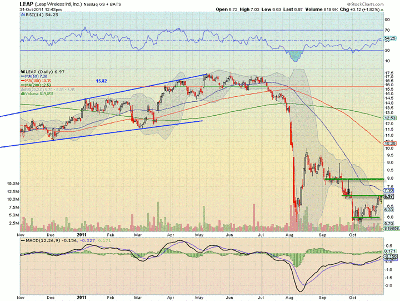Traders who structure what is known as a “call spread risk reversal” can participate in an equity’s upside movement without putting forth the capital to own the actual equity outright.
There are many different strategies that I use with options, and over the next few weeks, I will go through some of them to help explain the strategies and how they can be used to access the market with controlled risk.
The first article in this series is devoted to the call spread risk reversal. Sounds complicated, but like with most jargon, once you understand what it means, the name is just a good shortcut to use in discussing the strategy.
Call Spread Risk Reversal
This strategy consists of buying one call option and selling a higher-strike call option to create the call spread, and then selling a put option. Both calls are from the same expiry and the put is usually from that same expiry as well.
This is a strategy that requires the use of margin since you are naked short a put, but because the downside is limited to the strike price of the put, it can also be done in a non-margin account that is set up to trade cash covered puts, like an IRA or 401(k).
See related: The Basics of Writing Covered Calls
The reasoning for trading this options combination comes from a desire to participate in upside movement in a stock without owning and being willing to own the stock if it pulls back to the put strike level. Confusing? Let’s look at an example from a recent trade on Leap Wireless (LEAP).
The chart above shows LEAP at midday on October 31, just hours before it reported earnings that night. Pay specific attention to the three green lines on the chart. The one at $6.00 represents the bottoming process that occurred through October, the one at $7.00 the resistance where it was currently sitting, and the one at $8.00 the next level of resistance.
NEXT: See Advantages Over a Traditional Call Spread
|pagebreak|This chart is set up bullishly from many perspectives (contact me for more), so I wanted to participate in a move higher from the earnings catalyst.
But I also thought that if it fell back to $6.00, it would be a good place to buy the stock for a run back higher. The trade we did was a November 7/8 call spread risk reversal with a short November 6 put.
This trade is entered by buying a November 7-strike call and selling a November 8-strike call, giving a $1 upside maximum profit, and then selling a November 6-strike put, exposing the buyer to owning the stock at $6.00.
Why do this instead of just buying a call spread? Well, the call spread itself cost about 35 cents. On its own, this creates a reward/risk ratio of 2.85:1. By selling the 6-strike put at 35 cents, a level where I am comfortable owning the stock from a technical perspective, the cost of the combination is reduced to near zero and the reward/risk ratio is increased to near infinite on the call spread.
Often these trades can be entered for credit. Since there is margin used, there is a cost to carry that, but for very short-term trades, the return far outweighs that cost.
This trade worked out very well. I closed the call spread piece of it the next day for 45 cents and bought back the puts three days later for five cents for a net of 40 cents profit off of no outlay. Pretty great, but my bad, as at the close days later, it could have been liquidated for 73 cents.
But what if it did not run higher? Then the call spread could be liquidated for any price or even held to expire worthless without worry. And if the stock fell to $6.00, we would have bought the stock at $6.00, as previously planned. A winner no matter what the price does. Or maybe, more technically, no chance to lose.
Not all trades work out like this one. Some are much better, and others not so good. But I hope this helps to give you another perspective that you can participate in the market with very controlled risk using options.
By Greg Harmon of Dragonfly Capital
For more details on how I traded this name and for more ideas and deeper analysis, check out my premium service by clicking here.




















